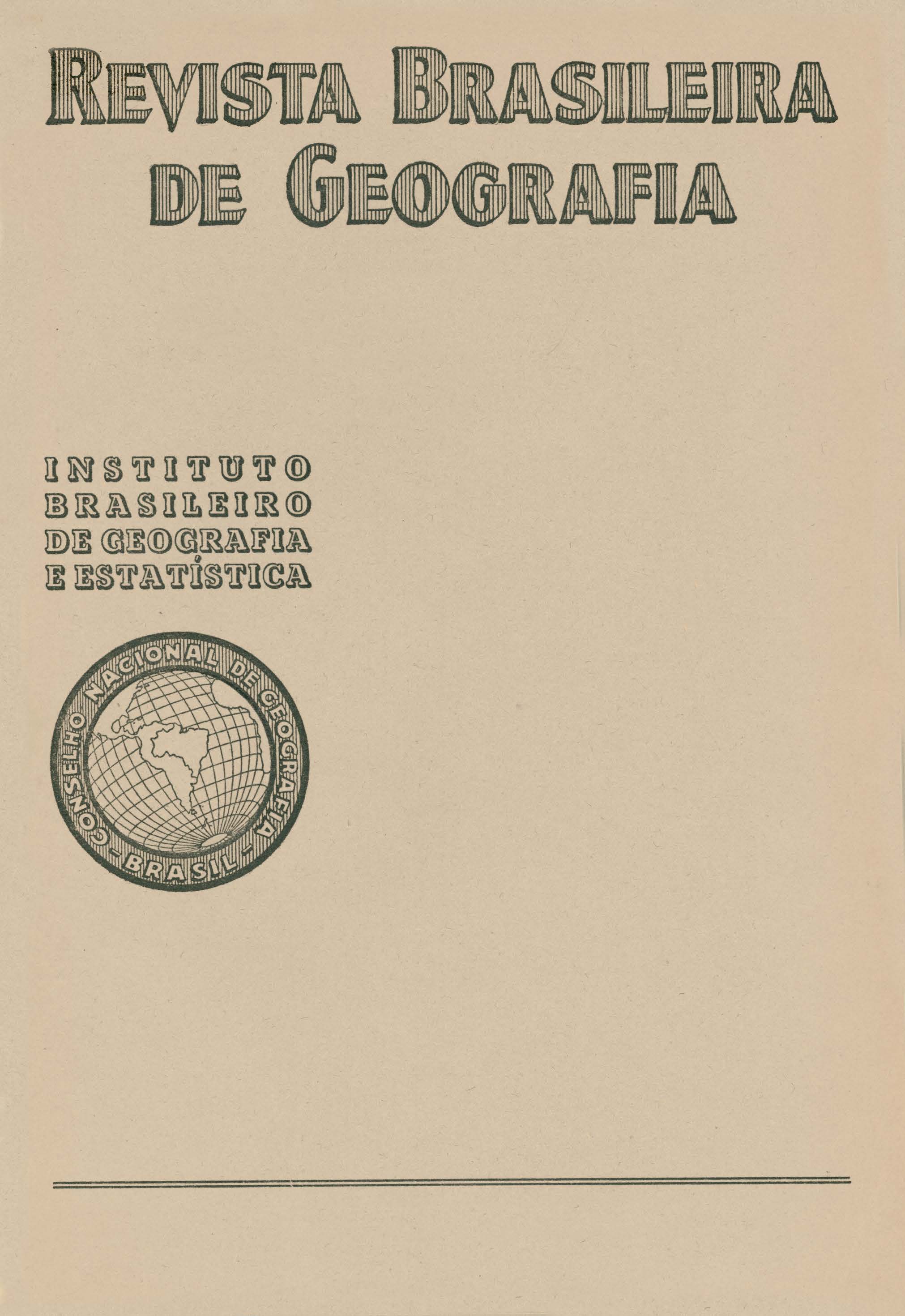Aspectos geográficos, geológicos e políticos da questão do petróleo no Brasil
Keywords:
Geologia;, Geografia Política;, Petróleo;, Bacias Sedimentares;, Geopolítica.Abstract
The author, Sílvio Fróis Abreu, begins the resume with an over-all description of the appearance of Brazil. describing the main physical characteristics of the Amazon area, the coastal plain and the interior highland. He describes the natural regions, bringing out the economic importance of each of them. In the second chapter, he presents a general geological outline dividing the country into two categories: the region covered by sediment capable of containing petroleum and the region covered with pre-cambrian rocks. He gives geographical names to the various basins and describes the location, size, kind of sediment, as well as known opinions about the tectonics of each o f them. In order to deal only with those that show the greatest possibility of petroleum. he refers to the basins of the Upper-Amazon, the Lower-Amazon, the North-Central, the coastal strip of the Northeast, the Campos basin, the Paraná basin and the basin of the Upper-Araguaia. The possibilities of oil in each of them is discussed based on the few presently known facts. In the third chapter, the demographic panorama is dealt with. The distribution of the Brazilian population is shown, its density in the various regions of the country, what activities dominate the area, and which zones need petroleum most urgently for their most rapid progress. The fourth chapter is a discussion of the zone in which it would be most useful for the country to find oi! and of those zones which present the greatest possibilities for finding oil because of their natural geological formation. He reaches the conclusion that the Upper-Amazon seems to have the greatest possibilities. From the viewpoint of nearness of markets, facility of transport and refining, the Paraná basin was the first choice. And then, the petrolific province of the Northeast, where there already is the Recôncavo field. In the fifth chapter, brief information is given about the Recôncavo field (Bahia), the only producing area and which constitutes the national reserve. The structure of the basin is described and the nature of the sediment in the Lobato, Aratu, Candeias and Itaparica fields.
He summarizes the orientation given to the workers in Bahia and other parts of the country by the National Counsel of Petroleum. Finally, the political aspect of the petroleum question for Brazil is discussed in chapter six. He points out that the daily consumption of oi! is about 30,000 barrels and that production during the last year only reached about 200 barrels daily or Jess than lo/o. At present, our needs are furnished by North-American companies which bring oil from the United States and Venezuela. By means of a treaty with Bolivia, Brazil promised to cooperate in the carrying out of explorations in the Lower-Andean region, north of the Parapeti river, being bound to transport the oi! by the railroad wich is already in an advanced state of construction. Petroleum discovered in the Pachitéa region of Peru, near the frontier, has naturally gone out to Brazil via the Amazon river. The Amazon region is the South American fountain which has as yet been but slightly developed and which the Brazilian businessmen have to conquer. The Argentine, due to its economic expansion, will not be able to furnish oil to Brazil, and Colombia seems to be less advantageous than Venezuela in distance, market accessibility, and equipment. ·
It seems that a good role to follow is to offer all assistance in expanding the production of oil in the two areas pointed out, which are internal fountains, situated in the Western part of the country and therefore sufficiently protected when we might not have the native supply from the East. So, in order to support the effort to have our own wells, which should be the greatest problem for Brazil, all aid should also be given to the explorations for petroleum in eastern Peru and Bolivia.






